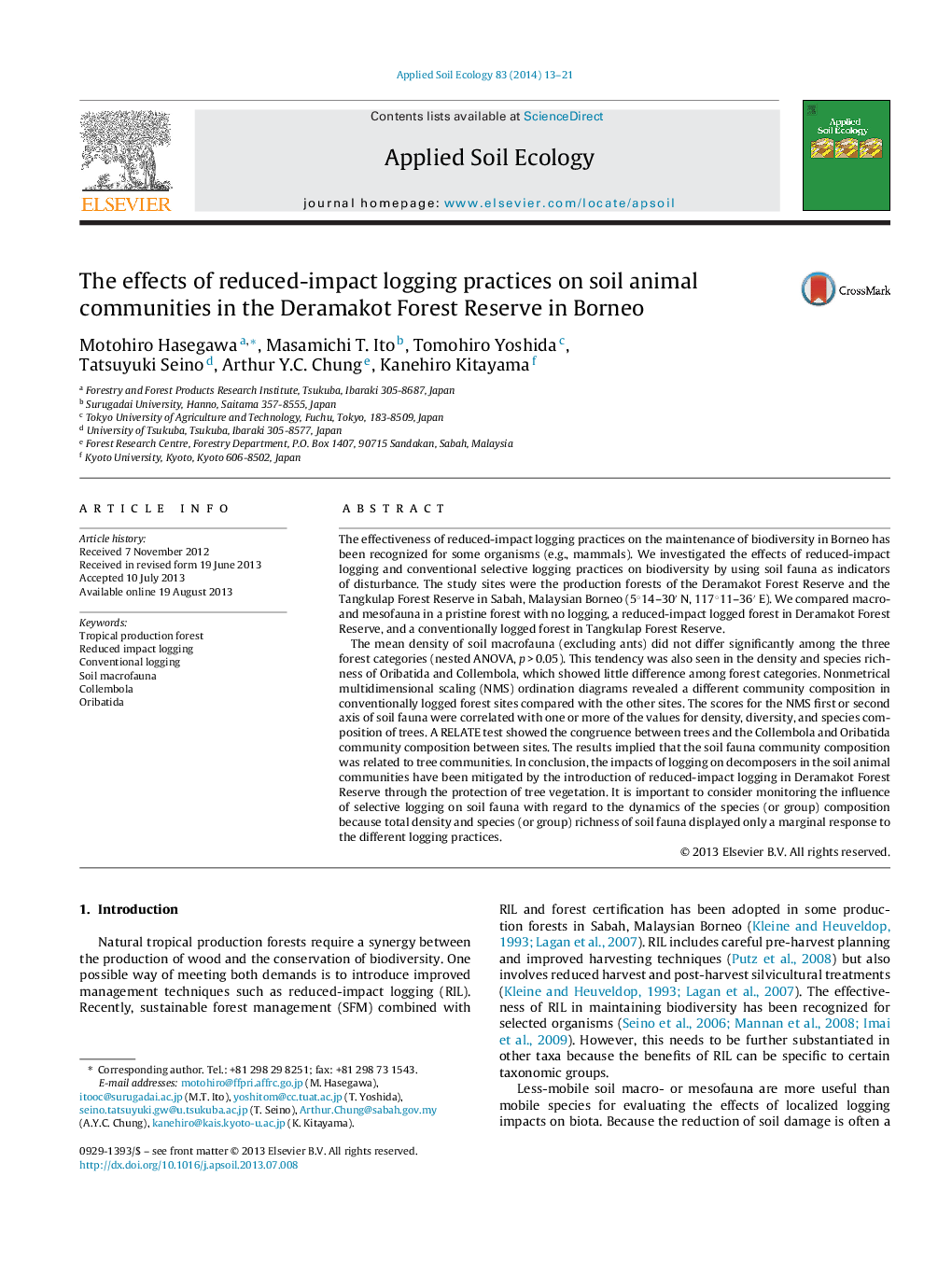| Article ID | Journal | Published Year | Pages | File Type |
|---|---|---|---|---|
| 4382195 | Applied Soil Ecology | 2014 | 9 Pages |
Abstract
The mean density of soil macrofauna (excluding ants) did not differ significantly among the three forest categories (nested ANOVA, p > 0.05). This tendency was also seen in the density and species richness of Oribatida and Collembola, which showed little difference among forest categories. Nonmetrical multidimensional scaling (NMS) ordination diagrams revealed a different community composition in conventionally logged forest sites compared with the other sites. The scores for the NMS first or second axis of soil fauna were correlated with one or more of the values for density, diversity, and species composition of trees. A RELATE test showed the congruence between trees and the Collembola and Oribatida community composition between sites. The results implied that the soil fauna community composition was related to tree communities. In conclusion, the impacts of logging on decomposers in the soil animal communities have been mitigated by the introduction of reduced-impact logging in Deramakot Forest Reserve through the protection of tree vegetation. It is important to consider monitoring the influence of selective logging on soil fauna with regard to the dynamics of the species (or group) composition because total density and species (or group) richness of soil fauna displayed only a marginal response to the different logging practices.
Related Topics
Life Sciences
Agricultural and Biological Sciences
Ecology, Evolution, Behavior and Systematics
Authors
Motohiro Hasegawa, Masamichi T. Ito, Tomohiro Yoshida, Tatsuyuki Seino, Arthur Y.C. Chung, Kanehiro Kitayama,
